Search Thermo Fisher Scientific
Invitrogen
CD369 (Clec7a, Dectin-1) Monoclonal Antibody (15E2), PE, eBioscience™
This Antibody was verified by Cell treatment to ensure that the antibody binds to the antigen stated.
FIGURE: 1 / 5
CD369 (Clec7a, Dectin-1) Antibody (12-9856-42) in Flow
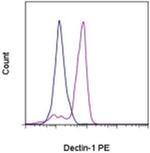
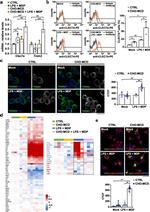
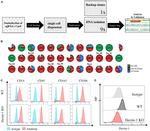
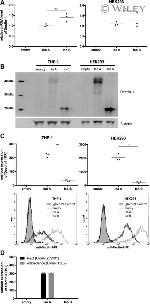
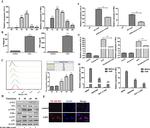
Product Details
12-9856-42
Species Reactivity
Published species
Host/Isotype
Recommended Isotype Control
Class
Type
Clone
Conjugate
Excitation/Emission Max
Form
Concentration
Purification
Storage buffer
Contains
Storage conditions
Shipping conditions
RRID
Product Specific Information
Description: This 15E2 monoclonal antibody reacts with human and non-human primate CD369, which is also known as the Dectin-1 or beta-glucan receptor or CLEC7A. CD369 is expressed predominantly on monocytes, macrophages, and dendritic cells. Moreover, this receptor can also be detected on neutrophils and lymphocytes, as well as induced by cytokines such as IL-4 or LPS. In humans, CD369 exists as two isoforms that arise due to alternative splicing. CD369 binds beta-1,3-glucan and plays an important role in activating signal transduction involved in the innate immune response to fungal and mycobacterial infections. Studies have also shown the involvement of CD369 in dendritic cell activation.
The 15E2 monoclonal antibody has been reported to recognize both isoforms of CD369 and activate dendritic cells. It does not crossreact to mouse CD369.
Applications Reported: This 15E2 antibody has been reported for use in flow cytometric analysis.
Applications Tested: This 15E2 antibody has been pre-titrated and tested by flow cytometric analysis of normal human peripheral blood cells. This can be used at 5 µL (0.25 µg) per test. A test is defined as the amount (µg) of antibody that will stain a cell sample in a final volume of 100 µL. Cell number should be determined empirically but can range from 10^5 to 10^8 cells/test.
Excitation: 488-561 nm; Emission: 578 nm; Laser: Blue Laser, Green Laser, Yellow-Green Laser.
Filtration: 0.2 µm post-manufacturing filtered.
Target Information
CLEC7A, also known as dectin-1, is a member of the C-type lectin/C-type lectin-like domain (CTL/CTLD) superfamily and is predominantly expressed on myeloid cells. It is a small glycoprotein type II membrane receptor with an extracellular C-type lectin-like domain fold and a cytoplasmic domain with an immunoreceptor tyrosine-based activation motif (ITAM). CLEC7A functions as a pattern-recognition receptor that recognizes a variety of beta-1,3-linked and beta-1,6-linked glucans from fungi and plants, and in this way plays a role in innate immune response. Upon fungal exposure, CLEC7A activates Syk tyrosine kinase, triggering a massive oxidative burst through the formation of reactive oxygen species.
For Research Use Only. Not for use in diagnostic procedures. Not for resale without express authorization.
How to use the Panel Builder
Watch the video to learn how to use the Invitrogen Flow Cytometry Panel Builder to build your next flow cytometry panel in 5 easy steps.
Bioinformatics
Protein Aliases: Beta-glucan receptor; C-type (calcium dependent, carbohydrate-recognition domain) lectin, superfamily member 12; C-type lectin domain family 7 member A; C-type lectin domain family 7, member A; C-type lectin superfamily member 12; CD369; DC-associated C-type lectin 1; dectin-1; Dendritic cell-associated C-type lectin 1; dendritic cell-associated C-type lectin-1; lectin-like receptor 1
Gene Aliases: BGR; CANDF4; CD369; CLEC7A; CLECSF12; DECTIN1; SCARE2; UNQ539/PRO1082
UniProt ID: (Human) Q9BXN2
Entrez Gene ID: (Human) 64581

Performance Guarantee
If an Invitrogen™ antibody doesn't perform as described on our website or datasheet,we'll replace the product at no cost to you, or provide you with a credit for a future purchase.*
Learn more
We're here to help
Get expert recommendations for common problems or connect directly with an on staff expert for technical assistance related to applications, equipment and general product use.
Contact tech support

